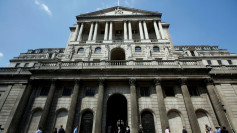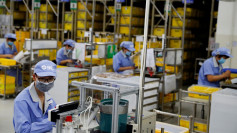The U.S. inflation rate cooled more than expected in February, rising 2.8% on an annual basis as consumer price increases showed signs of moderating, according to the Bureau of Labor Statistics. The consumer price index (CPI) increased 0.2% for the month, following a 0.5% rise in January. Core CPI, which excludes volatile food and energy costs, also rose 0.2% on the month and was up 3.1% from a year ago.
The February reading was slightly below economists' expectations. Dow Jones had projected a 2.9% annual inflation rate and a 0.3% monthly gain. Stock market futures rose following the release, while Treasury yields climbed. The data comes at a critical time for markets, as the Federal Reserve weighs the trajectory of interest rates and the potential economic fallout from President Donald Trump's new trade tariffs.
Shelter costs, a major component of the CPI, increased 0.3% for the month, a slight slowdown from January but still accounting for about half of the monthly inflation rise. Food and energy prices both rose 0.2%. Used vehicle prices increased 0.9%, and apparel costs climbed 0.6%. Egg prices jumped 10.4% in February, bringing their 12-month increase to 58.8%, while beef prices rose 2.4% for the month. Airline fares declined by 4%.
The report provides some relief for consumers after four consecutive months of inflation acceleration. However, the improvement may be short-lived as Trump's 25% tariffs on steel and aluminum imports took effect Wednesday, prompting immediate retaliation from the European Union. The administration has also imposed a 20% tariff on goods from China, raising concerns about higher costs for manufacturers and consumers.
Federal Reserve officials are monitoring these developments closely. "The February CPI release showed further signs of progress on underlying inflation, with the pace of price increases moderating after January's strong release," said Kay Haigh, global co-head of fixed income and liquidity solutions at Goldman Sachs Asset Management. "While the Fed is still likely to remain on hold at this month's meeting, the combination of easing inflationary pressures and rising downside risks to growth suggest that the Fed is moving closer to continuing its easing cycle."
The Fed, which meets next week, is expected to keep its benchmark interest rate in a range of 4.25% to 4.5%. Market expectations suggest the central bank may cut rates as soon as May, with traders pricing in as much as 0.75 percentage points in reductions by the end of 2025.
While inflationary pressures have moderated, economic growth remains a concern. The Atlanta Fed's GDPNow model forecasts a 2.4% contraction in the first quarter, which would mark the first negative growth quarter in three years. The potential impact of Trump's tariffs on prices and economic activity remains a key uncertainty for policymakers.






